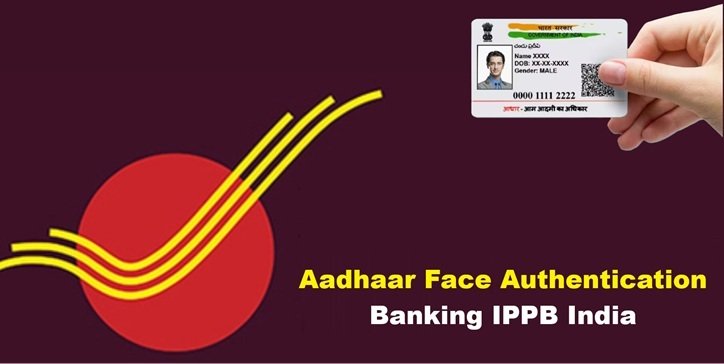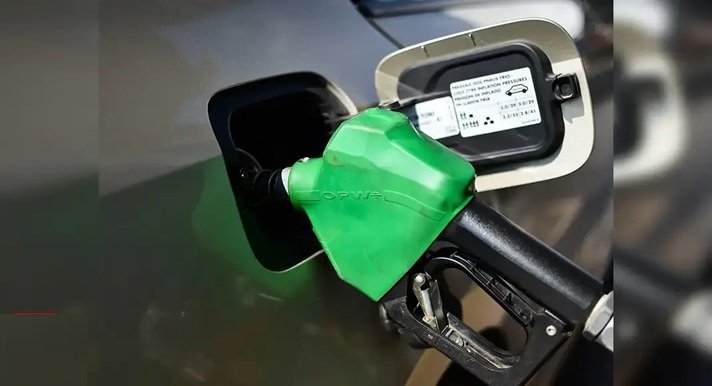Introduction
In a country like India, wherein digital transformation is changing the financial landscape, the mixing of Aadhaar face authentication in banking has emerged as an awesome innovation. The Indian Post Payments Bank (IPPB), backed by India Post and the Government of India, is spearheading this movement. The introduction of Aadhaar face authentication banking IPPB India version is transforming the manner banking is conducted, especially in rural and semi-urban regions.
This article dives deep into the concept, blessings, demanding situations, and implications of Aadhaar face authentication inside the Indian banking environment with a particular focus on IPPB’s initiative.
What is Aadhaar Face Authentication?
Aadhaar face authentication is a biometric verification approach introduced by the Unique Identification Authority of India (UIDAI). Unlike fingerprint or iris scans, this technique makes use of the facial recognition era to verify an individual’s identification.
Face authentication is especially useful for those who’ve problems with fingerprint or iris authentication because of developing older, horrible fingerprints, or bodily obstacles. This approach ensures that authentication can be finished contactless, improving protection and luxury.
Understanding IPPB and Its Role in Digital India
The India Post Payments Bank (IPPB) changed into launched to provide clean, available, and cheaper banking offerings the usage of the existing postal network. With over 1.57lakh publish offices of work and more than three lakh postal people (additionally called Gramin Dak Sevaks), IPPB is uniquely placed to supply economic offerings at the remaining mile.
In the brand new year, IPPB has been walking closely with UIDAI to permit Aadhaar face authentication banking, IPPB India answers, permitting seamless onboarding and transactions for clients in even the maximum far flung places.
How Aadhaar Face Authentication Works in Banking with IPPB
Here’s an easy breakdown of ways face authentication is applied in IPPB banking:
- Customer Enrollment: A client is onboarded to the IPPB system with their Aadhaar range and different KYC information.
- Face Capture: Using a telephone or a specialised tool, a picture of the client’s face is captured.
- Authentication Request: The image is dispatched to UIDAI’s Aadhaar Face RD Service for verification in opposition to the Aadhaar database.
- Verification Outcome: The device validates the healthy. If successful, the patron can hold banking transactions.
- Transaction Completion: Once authenticated, the purchaser can perform several services like coin withdrawal, balance inquiry, money switch, and more.
This makes Aadhaar face authentication banking IPPB India a game-changer in regions with limited connectivity and infrastructure.
Benefits of Aadhaar Face Authentication in IPPB Banking
1. Contactless and Hygienic
During and after the COVID-19 pandemic, hygiene has turned out to be paramount. Face authentication ensures no bodily contact, reducing the risk of contamination.
2. Inclusive for the Elderly and Differently Abled
For senior residents or individuals with tired fingerprints or physical disabilities, face authentication gives a non-intrusive and handy opportunity.
3. Last Mile Delivery of Banking
With IPPB integrating this device, banking can reach rural houses, ensuring even the underserved populace has get right of entry to to vital financial services.
4. Real-Time Authentication
The device works in real-time, allowing speedy and efficient customer service, particularly beneficial for time-sensitive transactions.
5. Boosts Financial Inclusion
By getting rid of the need for physical documents or complicated strategies, Aadhaar face authentication banking IPPB India model encourages humans to adopt virtual banking.
Security Measures in Aadhaar Face Authentication
Security is a prime state of affairs with biometric information. UIDAI and IPPB make sure that face authentication is finished securely through:
- Encrypted Data Transmission: All facial photos and statistics are transmitted using end-to-end encryption.
- Time-Stamped Authentication: Each transaction is tagged with time and region for superior safety.
- Audit Trail: IPPB continues a whole audit path to make certain obligation and traceability.
- Device Authentication: Only registered gadgets with strong RD offerings are allowed to perform authentication.
With such strong safety protocols, the Aadhaar face authentication banking IPPB India tool is given as proper with compliance.
Use Cases of Aadhaar Face Authentication in IPPB
1. Cash Withdrawals and Deposits
Customers can use facial authentication to confirm themselves and withdraw or deposit money through IPPB dealers.
2. Doorstep Banking
Gramin Dak Sevaks go to clients’ houses and authenticate them through face recognition to offer banking services.
3. Bill Payments and Recharges
A patron can pay application payments, cellular recharges, or coverage charges securely after Aadhaar face verification.
4. Opening New Bank Accounts
New clients can be onboarded remotely using Aadhaar face authentication as opposed to bodily documents or signatures.
Challenges in Implementation
While the Aadhaar face authentication banking IPPB India initiative has seen massive achievement, there are still hurdles that need addressing:
1. Connectivity Issues
Some some distance off areas lack a stable net, which is crucial for real-time authentication.
2. Device Compatibility
Not all gadgets are prepared for accurate facial recognition, which might have an impact on the reliability of services.
3. Privacy Concerns
Despite encryption, there is ongoing public concern about the misuse of biometric information.
4. Facial Recognition Accuracy
Factors that include horrible lighting fixtures, camera excellent, or consumer movement can have an effect on accuracy.
IPPB and UIDAI are always running on improving the tech backend to overcome those disturbing conditions.
Government Support and Policy Push
The Indian authorities have been actively supporting digital identity-based solutions. Under the Digital India marketing campaign, numerous duties are promoted to beautify e-governance and virtual banking.
The integration of Aadhaar-based face authentication by way of IPPB aligns with national dreams of:
- Increasing virtual penetration
- Reducing dependency on bodily infrastructure
- Promoting monetary inclusion
- Encouraging steady and reachable e-KYC strategies
The Aadhaar face authentication banking IPPB India scheme is a key part of India’s virtual transformation roadmap.
Future of Aadhaar Face Authentication in Indian Banking
The fulfillment of IPPB in enforcing face authentication paves the way for wider adoption at some point in special banks. In the close to destiny, we can anticipate:
- Integration with Other Banks: Public and private banks might also have a look at IPPB’s version.
- Wider Service Availability: Aadhaar-based definite authentication might be used for pensions, subsidies, and DBT (Direct Benefit Transfers).
- AI Enhancements: Improved facial reputation accuracy through the usage of AI and device mastering.
- Offline Authentication Models: Face authentication must work even without active internet in the destination versions.
The Aadhaar face authentication banking IPPB India gadget is simply the beginning of biometric banking’s next evolution.
Real-Life Impact Stories
1. Empowering Women in Villages
In rural Maharashtra, many girls didn’t have get entry to to banking. With IPPB’s Aadhaar face authentication, doorstep banking allowed them to open debts and get proper access to subsidies right away.
2. Pension Access for the Elderly
In Uttarakhand, an eighty two-12 months-antique woman became unable to withdraw her pension due to fingerprint failure. Aadhaar face authentication helped her get proper access to finances without a problem.
3. Farmers Receiving DBT
In Bihar, several farmers obtained Kisan Samman Nidhi at once through Aadhaar-authenticated IPPB debts, saving them money and time.
Frequently Asked Questions
Q.1: What is Aadhaar face authentication in banking?
Aadhaar face authentication is a biometric verification technique using facial recognition. In banking, it verifies a client’s identity for stable transactions and onboarding.
Q.2: How does IPPB use Aadhaar face authentication?
IPPB makes use of it to allow banking services at the doorstep through postal human beings. Customers can authenticate themselves using facial recognition in place of bodily ID or fingerprints.
Q.3: Is Aadhaar face authentication regular?
Yes, it’s miles stable. UIDAI makes use of encrypted statistics, stable devices, and audit trails to make certain the authentication approach is steady and tamper-evident.
Q.4: Can elderly human beings use face authentication with IPPB?
Absolutely. Aadhaar face authentication is good for the elderly who face problems with fingerprint-primarily based absolutely authentication.
Q.5: Is a net required for Aadhaar face authentication?
Yes, the modern-day version calls for net connectivity to talk with UIDAI servers in real time. However, efforts are being made to introduce offline talents in the future.
Q.6: What devices are used for Aadhaar face authentication in IPPB?
Postal human beings and IPPB entrepreneurs use smartphones or biometric gadgets that help UIDAI’s Face RD Service to carry out facial authentication.
Q.7: What are the benefits of Aadhaar face authentication banking IPPB India model?
It ensures inclusivity, security, and comfort even as it allows virtual banking in rural areas, mainly for folks who find traditional authentication strategies hard.
Q.8: How is privacy ensured in Aadhaar face authentication?
Privacy is ensured through encrypted records transmission, tool validation, and UIDAI’s strict protocols on information utilization.
Q.9: Can Aadhaar face authentication update OTPs?
In certain conditions, like e-KYC or banking authentication, face authentication can serve as a possibility or an additional layer to OTPs.
Q.10: Is this provider available throughout India?
Yes, IPPB is increasing Aadhaar face authentication services in some parts of India using its massive postal network.
Conclusion
The implementation of Aadhaar face authentication banking IPPB India marks a turning point in India’s adventure closer to inclusive, digital, and solid banking. With superior accessibility, strong protection, and robust authorities backing, this era is reworking economic offerings at the grassroots level. As demanding situations are addressed and greater innovations emerge, Aadhaar face authentication will without a doubt come to be a cornerstone of destiny banking in India.










